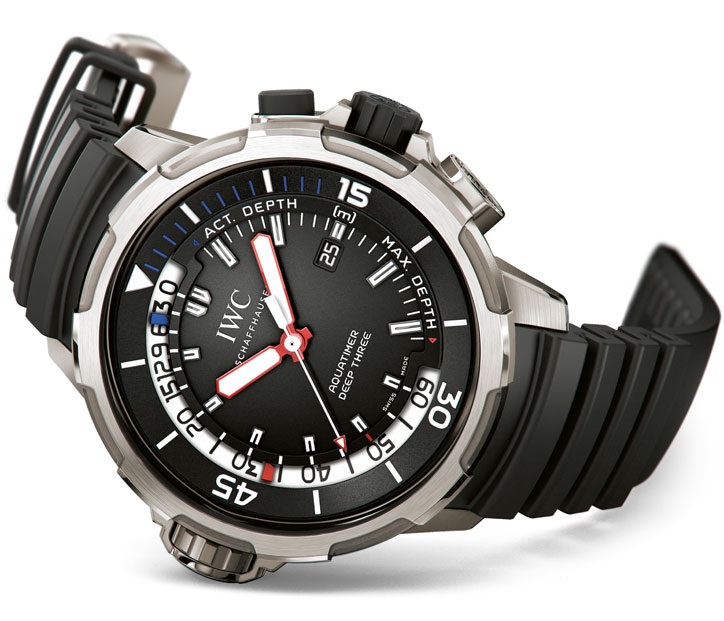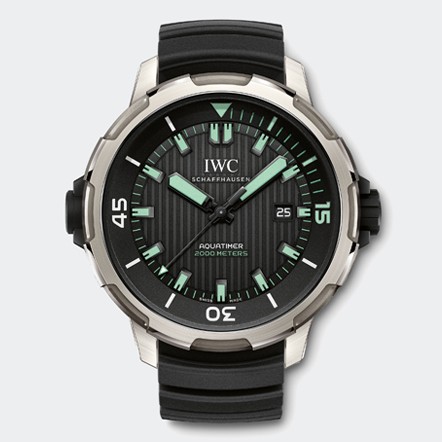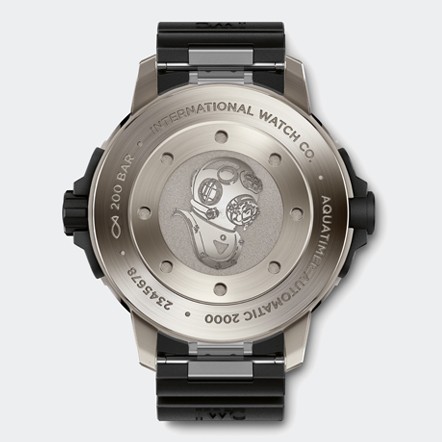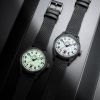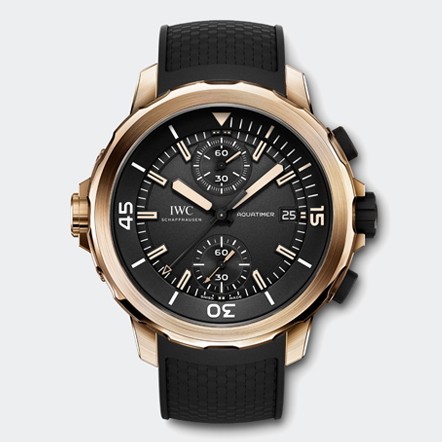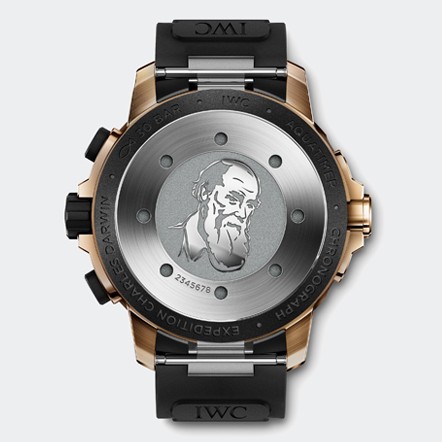By Matt Himmelstein
I am an avid scuba diver, though to be honest, I do not get to go out in the ocean and blow bubbles nearly as often as I would like. That does not stop me from wearing a diving watch as part of my usual rotation of watches. Now, I am of the opinion that a diver’s watch is one of the least essential tools a modern diver can wear. It used to be the case, when divers relied on tables, that a depth gauge and a timing device were essential tools. And if this were 20 years ago, the IWC Aquatimer Deep 3 would be the perfect high end dive watch. Built into this lovely watch is a depth guage that reads current depth and retains the maximum depth of a dive. You also get IWC’s in house automatic movement and (my favorite feature for a dive watch) and internal rotating bezel. The fact that this is all packed into a watch that stands at 16mm thick is quite an accomplishment.
The lume, at least as shown in the promotional material, is very impressive, and the red outlining of the hands gives this watch a bold look that is not going to be too out of place in a business meeting. Now, the depth gauge does only read to 50 meters, and the watch is only rated to 10 ATM, so this is strictly for recreational diving, which does not allow for planned decompression stops, in spite of the advertising that states “the diver can plan any necessary decompression stops and remain at the necessary depth to conclude the dive safely and successfully.” It is also not a “a complete backup system for the dive computer,” unless you are doing no more that two dives a day with a fairly conservative diver profile.
I am more drawn to the other models in the Aquatimer family, notably the Automatic 2000 and the “Expedition Chalres Darwin,” a chronograph in bronze. All of the Aquatimer watches make use of an internal rotating bezel, where the standard external bezel can actually rotate in both directions, while an internal clutch disengages the internal bezel except when the external one is rotated counterclockwise. The internal rotating bezel allows it to be moved under the crystal, giving the watch a cleaner look and protecting it, while the external bezel is easier to operate than other systems which use a small cog to adjust the bezel. By moving only counterclockwise, your timing indicator is only allowed to shorten, ensuring that you are always in a safe timing zone. Since I think that 90% or more of these timers are used for parking meters, not dives, this means that you will get back to your car before the meter maid can hang a ticket. The fact that the bezel rotates in both directions, gives a fiddler like me something to play with in long meetings, again without changing whatever I happen to be timing.
The Darwin model adds two features that I really like, a chronograph and a bronze case. The bronze case will develop a patina over time to give your watch a personality that will be unique, even when placed next to other identical models; though with a limited run of 500 pieces, you are unlikely to see a lot of these in the wild. The case back also features the likeness of Charles Darwin.
Matt Himmelstein – Contributing Writer
Engineer, weekend warrior and mechanical watch enthusiast. He prefers value oriented brands because, well, those are the ones he can afford while still paying for all his weekend warrior hobbies. New watch makers are also an interest because you can get often get a unique look, and the watch now comes with a story. His favorites in his small collection are a Christopher Ward altimeter style and an Anstead dive watch from a Kickstarter campaign.

